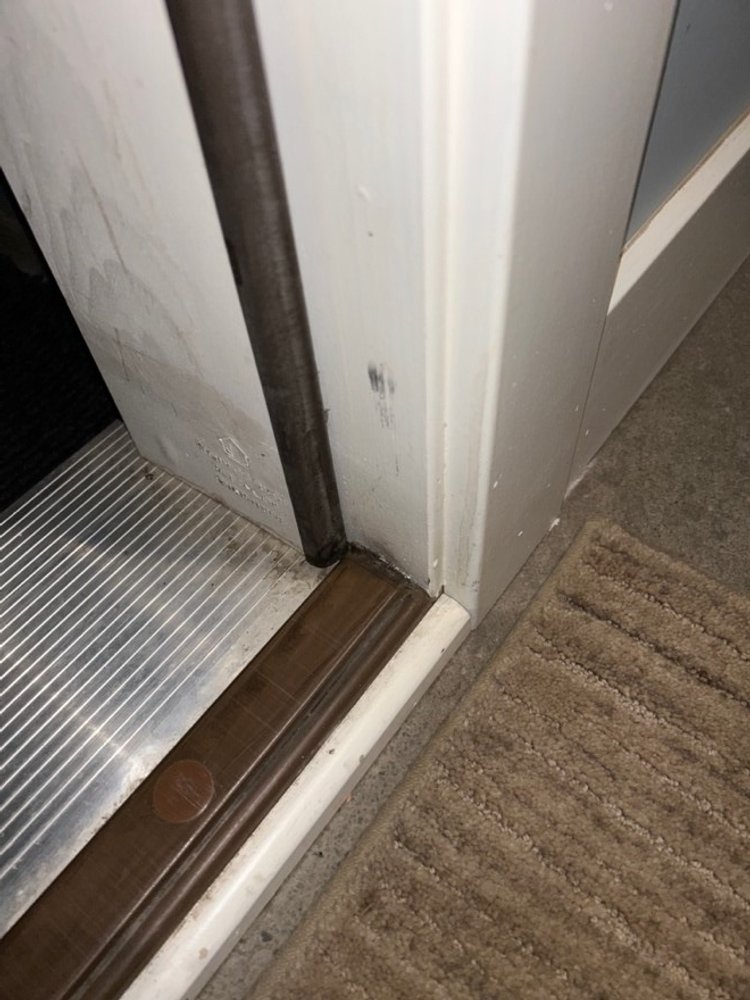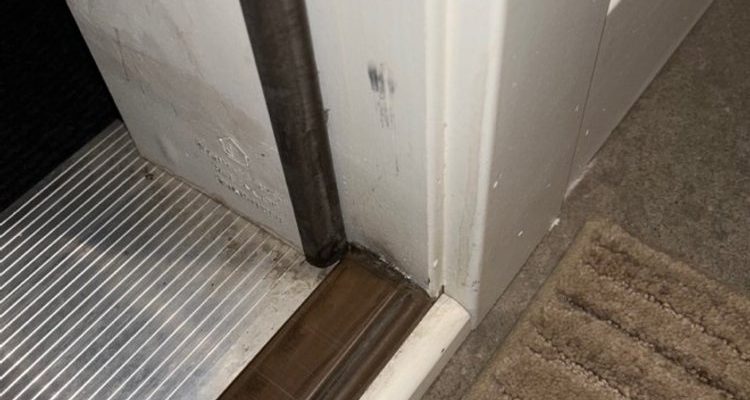
Honestly, most folks don’t realize just how much abuse those exterior door seals take. They’re like doormats for the weather—always out front, coping with sunlight, rain, snow, and even the occasional wayward soccer ball. And if you’re dealing with popular brands like Frost King or MD Building Products, you’ll know they don’t promise a lifetime shield. Over time, even the toughest brands can end up feeling stiff, brittle, and pretty much useless.
Here’s the thing: if your door seal feels more like a stale pretzel than a piece of flexible rubber, *ultraviolet (UV) damage* is probably the main villain. Let’s look at why UV rays are so brutal on door seals, what that means for your home, and how you can actually do something about it.
What Exactly Is UV Damage—and Why Does It Attack Door Seals?
First, let’s break down what UV damage really is. When people talk about sunlight wearing things down, they’re mostly talking about ultraviolet (UV) rays—those invisible parts of sunlight that cause sunburns, faded patio furniture, and, yes, cracking door seals. Just like your skin, rubber and plastic seals have a hard time standing up to years of direct sunlight.
UV rays are high-energy and can actually break down the chemical bonds in rubber, vinyl, or any synthetic material. Imagine sunlight as a billion tiny chisels, poking and prodding at your door seal every day. At first, it seems harmless. But over the months (or especially over a summer or two), those tiny breakdowns add up. The seal loses its flexibility and starts to turn hard or crumbly—what we call “brittle.”
Here’s the tough part: no matter what brand your exterior door seal is—whether it’s a high-end name from MD Building Products or an off-brand replacement—if it’s exposed to enough sun, it’ll eventually lose the battle. Some materials last longer, but all seals will wear out under UV’s constant assault.
How Can You Tell If UV Damage Is the Problem?
You might be wondering if there’s a way to know for sure that UV rays are causing your trouble. The short answer? Yes, there are some clear signs.
- Texture changes: Run your finger along the seal. If it feels dry, stiff, or flakes when you press it, UV damage is likely.
- Color fading: A seal that used to be deep black may look gray or even yellowish now—classic sun-fade symptoms.
- Cracks or splitting: Check for small lines or cracks running along the surface, especially on the side that faces outside.
- Loss of flexibility: Try to bend or press the seal. If it snaps or doesn’t “bounce back,” the UV rays have done their work.
A quick story to show how sneaky this can be—a neighbor of mine called me over because she couldn’t get her brand-new remote deadbolt to pair reliably. Turns out, the door seal had gotten so brittle and warped from sun exposure that it wasn’t letting the door close tightly. That meant the battery-powered lock wasn’t syncing up correctly, all because of a little rubber weatherstrip! Sometimes, UV damage isn’t just about drafts or dust. It can even mess with your home’s electronics.
Why Does It Matter If Your Door Seal Gets Brittle?
At first glance, a brittle door seal might just seem annoying—maybe a little ugly or messy. But here’s why you shouldn’t ignore it:
- Energy loss: Gaps allow heated or cooled air to escape, forcing your HVAC system to run longer. That means higher bills and less comfort.
- Water leaks: Damaged seals aren’t watertight. Rain can sneak under your door, possibly leading to water damage or mold.
- Drafts and bugs: Even a small crack gives bugs and cold air a direct route into your home—never fun in winter or bug season.
- Noise: A brittle or missing seal can make your home noisier, especially if you live near traffic or loud neighbors.
Even that high-tech August or Schlage electronic lock you just installed won’t do much good if the door can’t close and seal properly. The problem isn’t just a “code” or “reset” issue with the remote—it’s a physical gap, and no amount of syncing will fix it.
Are Some Door Seal Materials Better Than Others?
Not all door seals are created equal. If you’ve ever stood in the hardware aisle, you’ve probably noticed a bunch of different options: vinyl, rubber, silicone, and sometimes even foam. Here’s how they compare when it comes to UV resistance and brittleness:
- Vinyl: Cheap, easy to find, and installs quickly. The downside? Vinyl gets brittle very fast under sunlight—sometimes in less than a year if it faces west or south.
- Rubber (EPDM): This is the classic, heavy-duty weatherstrip material. It lasts longer than vinyl, but will still harden with enough UV exposure.
- Silicone: The star for UV protection. Silicone resists sunlight far better, staying flexible for years. It can cost more up front, but pays off in longevity.
- Foam: Used for interior doors or temporary fixes. Foam breaks down even faster outdoors and really isn’t meant for sun-exposed spots.
So, honestly, if you’re tired of swapping out brittle seals every year, *upgrading to silicone* can save you a ton of headaches. It’s the difference between a seal that gives up in a year and one that holds strong for five or more, even in harsh sun.
How Long Should My Exterior Door Seal Last?
This is a question I get a lot: “How long should an exterior door seal actually last before getting brittle?” The answer isn’t one-size-fits-all, but here’s a rough breakdown based on material and sun exposure:
- Vinyl: 1–2 years in strong sunlight. Maybe up to 3 in a shaded spot.
- Rubber (EPDM): Around 3–5 years, depending on sunlight hours and climate.
- Silicone: Often 5–10 years, even in direct sun, if installed properly.
Other factors matter too. If your door faces south or west (the sunniest directions), expect the seal to wear out faster. Extreme temperatures, regular cleaning with harsh chemicals, or constant friction from a tight-fitting door can also lower the lifespan.
A quick little checklist: If you have to *reset* your seal every fall—meaning, adjust it with a screwdriver or try to “pair” it back into shape with glue—that’s a good sign it’s time for a full replacement instead.
Can I Protect My Door Seals From UV Damage?
You can’t move the sun, but you can take simple steps to slow down the damage and keep your seals feeling fresh. Here’s what helps:
- Choose UV-resistant materials: Silicone and high-quality EPDM rubber hold up better than vinyl or foam.
- Regular cleaning: Dirt and debris can make UV damage worse. Use a damp cloth now and then, not harsh chemicals.
- Apply protectants: Some people use car tire protectant (foam or spray) to help block UV rays. Just check that it’s safe for your seal material.
- Install overhangs or shades: If your entryway bakes in sunlight, adding a small awning or shade can make a huge difference.
- Inspect yearly: Get in the habit of checking your seal for cracks, splits, or stiffness—right along with other seasonal maintenance like swapping batteries in your remote door lock.
Let me explain—taking a few minutes once or twice a year can double or triple the lifespan of an exterior seal. It’s a bit like checking your smoke detectors or re-coding your garage remote: not glamorous, but so worth it.
How Do I Replace a Brittle Exterior Door Seal?
When your door seal feels brittle, there’s really no DIY shortcut for bringing it back to life. Replacement is the way to go. But it’s not as tough as it sounds—honestly, it’s easier than resetting a universal remote! Here’s a basic step-by-step:
- Remove the old seal: Peel or unscrew it from the door. You might need a flathead screwdriver or pry tool for stubborn bits.
- Clean the area: Wipe away dust, debris, or sticky old adhesive so the new seal grips well.
- Measure carefully: Buy the right size and type for your door. Most brands will tell you in the packaging what doors and frames they fit.
- Install the new seal: Press or screw it into place according to the instructions on the package—usually from top to bottom for the best seal.
- Test for gaps: Close the door and check for daylight, drafts, or uneven closing. Adjust as needed.
Some exterior seals are “universal” fit, while others are branded and need to match your exact door. It’s a bit like pairing a remote control—universal works for most, but sometimes you’ll need an exact match to get a perfect seal.
Don’t forget: a well-sealed door helps everything work better. Your locks, remotes, and even your energy bills will thank you.
When Should I Call a Pro for Help?
Most people can swap out a simple weatherstrip without much trouble. But there are times when bringing in a pro makes sense—especially if things have gone beyond a brittle seal. For example:
- Your door frame is warped or damaged, so new seals won’t sit right.
- You notice water leaks or rot along the threshold—this could mean bigger problems below the surface.
- Your high-tech lock or remote system still isn’t working right after replacing the seal—there could be a reset, code, or sync problem with the hardware.
A pro can spot hidden issues, recommend the best materials for your climate, and make sure the whole door system works together—seals, locks, remotes, and all.
Final Thoughts: Don’t Let UV Damage Catch You Off Guard
In the end, noticing that your exterior door seal feels brittle isn’t just a minor annoyance—it’s a sign your home’s defenses are wearing down. Sunlight is a powerful force, and UV rays have no problem turning a strong, flexible seal into a stiff, leaky strip of trouble.
The good news? Now that you know what’s going on, you can spot the signs early, pick better materials, and keep everything sealed tight for much longer. Whether you’re troubleshooting drafts, syncing a fancy new remote lock, or just trying to keep bugs out, a little maintenance goes a long way. Don’t wait for daylight to peek through your door—fight back against UV damage, and your home will stay cozier, quieter, and a lot more secure.
